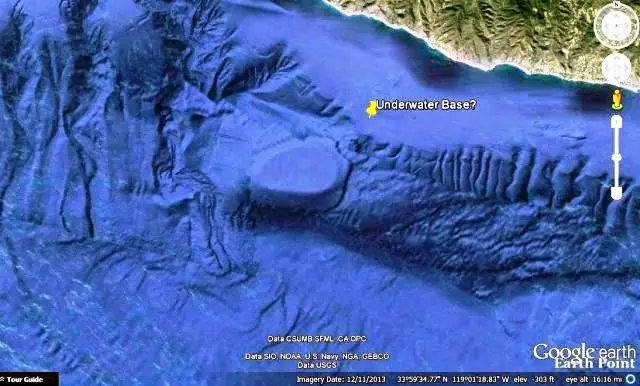|
|

Area 51 isn’t the only base filled with secrecy. As it turns out, there are countless underwater bases spread across different locations on our planet.
While many of us know about Area 51 and Dulce Base, the truth is there are more secret bases than you could ever imagine. Three years ago the CIA finally admitted the existence of Area 51, but many people around the world already knew about it and the mystery and secrecy behind it. Area 51 is just one of the many out there, but interestingly, most secret bases aren’t constructed on land, but deep under the […]
A team of experimentalists at the Max Planck Institute of Quantum Optics (MPQ) and theorists at the Chinese Academy of Sciences (CAS) has succeeded for the first time in populating and stabilizing a new type of molecule, so-called field-linked tetratomic molecules. These “supermolecules” are so fragile that they can only exist at ultracold temperatures. Their existence had long been suspected but has never been demonstrated experimentally—until now. […]
The field of photonic integrated circuits focuses on the miniaturization of photonic elements and their integration in photonic chips—circuits that carry out a range of calculations using photons, rather than electrons as are used in electronic circuits. […]
The German eROSITA consortium has released the data for its share of the first all-sky survey by the soft X-ray imaging telescope flying aboard the Spectrum-RG (SRG) satellite. With about 900,000 distinct sources, the first eROSITA All-Sky Survey (eRASS1) has yielded the largest X-ray catalog ever published. The work is published in the journal Astronomy & Astrophysics. […]
From the minuscule bindings of molecules to the far reaches of space, we’re exploring the universe around us by catching sight of the smallest particles of light. […]
In 2007, American Alex Collier said that he was taken by aliens and spent almost three months on a huge…
The post EX US Army Pilot Alex Collier Spent 3 Months on a UFO appeared first on Infinity Explorers.
[…]
Within the next 15 years, NASA, China, and SpaceX plan to send the first crewed missions to Mars. In all three cases, these missions are meant to culminate in the creation of surface habitats that will allow for many returns and—quite possibly—permanent human settlements. This presents numerous challenges, one of the greatest of which is the need for plenty of breathable air and propellant. Both can be manufactured through electrolysis, where electromagnetic fields are applied to water (H2O) to create oxygen gas (O2) and liquid hydrogen (LH2). […]
A cutting-edge tool to view planets outside our solar system has passed two key tests ahead of its launch as part of the agency’s Roman Space Telescope by 2027. […]
Solar flares occur when magnetic energy builds up in the sun’s atmosphere and is released as electromagnetic radiation. Lasting anywhere from a few minutes to a few hours, flares usually reach temperatures around 10 million degrees Kelvin. Because of their intense electromagnetic energy, solar flares can cause disruptions in radio communications, Earth-orbiting satellites and even result in blackouts. […]
In several billion years, our sun will become a white dwarf. What will happen to Jupiter and Saturn when the sun transitions to become a stellar remnant? Life could go on, though the giant planets will likely drift further away from the sun. […]
For the past year and a half, the James Webb Space Telescope has delivered astonishing images of distant galaxies formed not long after the Big Bang, giving scientists their first glimpses of the infant universe. Now, a group of astrophysicists has upped the ante: Find the tiniest, brightest galaxies near the beginning of time itself, or scientists will have to totally rethink their theories about dark matter. […]
In the realm of material science, the phenomena of polarization and polarity have conventionally been associated with insulators. However, envision a scenario where these characteristics could be induced in metals, potentially mitigating power losses attributed to semiconductors and extending the lifespan of batteries integrated into electronic devices. […]
As demands for computing resources continue to increase rapidly, scientists and engineers are looking for ways to build faster systems for processing information. One possible solution is to use patterns of electron spins, called spin waves, to transfer and process information much more rapidly than in conventional computers. So far, a major challenge has been in manipulating these ultrafast spin waves to do useful work. […]
Superconductivity is well understood in so-called “conventional” superconductors. More recent, however, are unconventional superconductors, and it is as yet unclear how they work. […]
NASA is wrapping up the initial phase of its Fission Surface Power Project, which focused on developing concept designs for a small, electricity-generating nuclear fission reactor that could be used during a future demonstration on the moon and to inform future designs for Mars. […]
|
|

